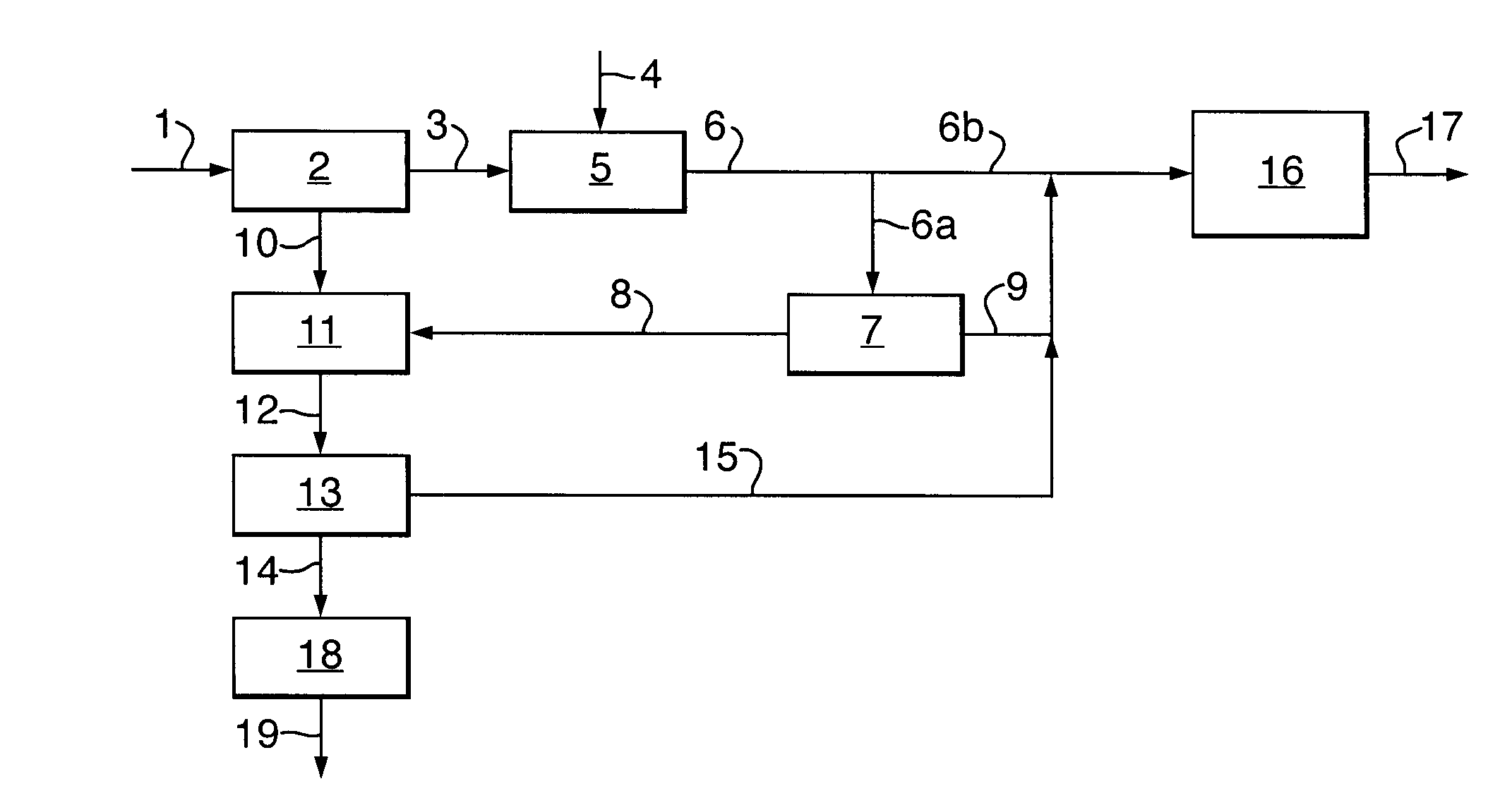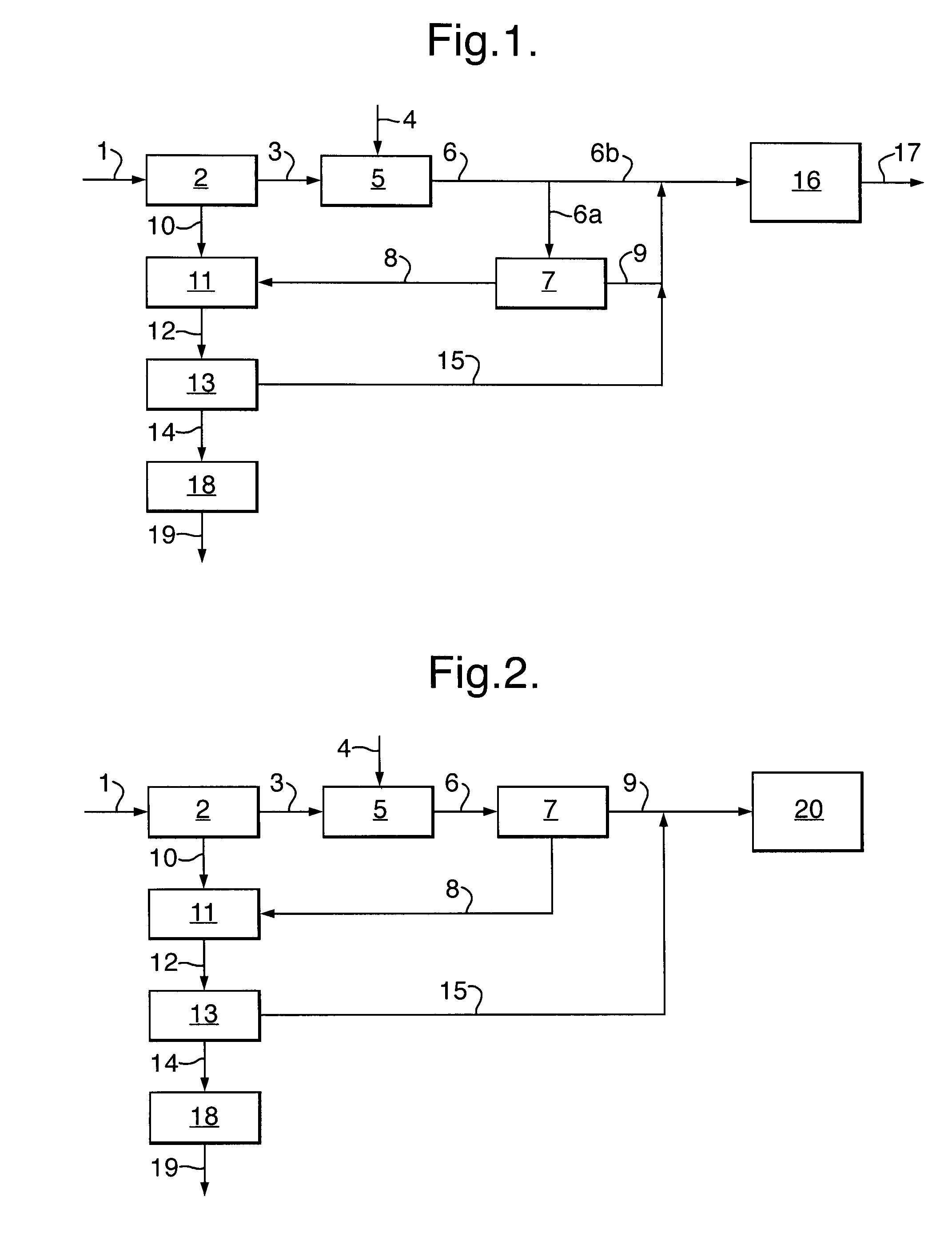Process for the manufacture of carbon disulphide
a technology of carbon disulphide and manufacturing process, which is applied in the preparation of oxygen-containing compounds, carbon-sulfur compounds, organic chemistry, etc., can solve the problems of high cost, high undesired disposal of hydrogen sulphide in the atmosphere, and high cost of treatment, so as to reduce the carbon monoxide to hydrogen ratio, and reduce the effect of design and cost benefits
- Summary
- Abstract
- Description
- Claims
- Application Information
AI Technical Summary
Benefits of technology
Problems solved by technology
Method used
Image
Examples
Embodiment Construction
[0024]In the process according to the invention, carbon monoxide is first reacted with hydrogen sulphide to form carbonyl sulphide and hydrogen according to:
CO+H2S→COS+H2 (1)
[0025]This reaction is known in the art, for example from U.S. Pat. Nos. 5,609,845 and 6,497,855 B1. The reaction may be carried out in any suitable way known in the art. Typically, the reaction will be carried out by contacting gaseous carbon monoxide and gaseous hydrogen sulphide with a catalyst. Suitable catalysts are for example those described in U.S. Pat. No. 5,609,845, the disclosure of which is incorporated herein by reference, for example mixed metal sulphides, sulphides of transition metals, in particular silica-supported metal sulphides. Typical reaction temperatures for step (a) are in the range of from 120 to 750° C.
[0026]The carbonyl sulphide formed in step (a) of the process according to the invention is then contacted in step (b) with a catalyst effective for disproportionating carbonyl sulphide...
PUM
| Property | Measurement | Unit |
|---|---|---|
| temperature | aaaaa | aaaaa |
| pressure | aaaaa | aaaaa |
| temperature | aaaaa | aaaaa |
Abstract
Description
Claims
Application Information
 Login to View More
Login to View More - R&D
- Intellectual Property
- Life Sciences
- Materials
- Tech Scout
- Unparalleled Data Quality
- Higher Quality Content
- 60% Fewer Hallucinations
Browse by: Latest US Patents, China's latest patents, Technical Efficacy Thesaurus, Application Domain, Technology Topic, Popular Technical Reports.
© 2025 PatSnap. All rights reserved.Legal|Privacy policy|Modern Slavery Act Transparency Statement|Sitemap|About US| Contact US: help@patsnap.com



